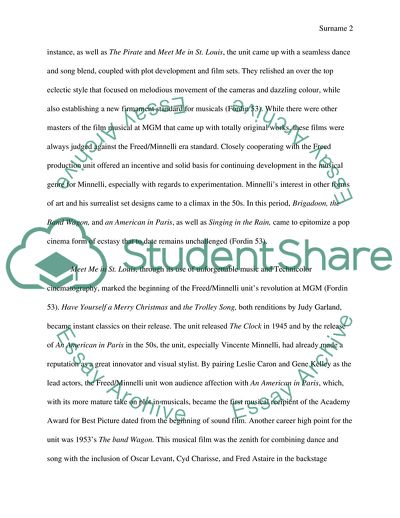Cite this document
(Freed and Minnelli era at MGM Essay Example | Topics and Well Written Essays - 1250 words, n.d.)
Freed and Minnelli era at MGM Essay Example | Topics and Well Written Essays - 1250 words. https://studentshare.org/visual-arts-film-studies/1813935-hollywood-musicals-freedminnelli-era-at-mgm
Freed and Minnelli era at MGM Essay Example | Topics and Well Written Essays - 1250 words. https://studentshare.org/visual-arts-film-studies/1813935-hollywood-musicals-freedminnelli-era-at-mgm
(Freed and Minnelli Era at MGM Essay Example | Topics and Well Written Essays - 1250 Words)
Freed and Minnelli Era at MGM Essay Example | Topics and Well Written Essays - 1250 Words. https://studentshare.org/visual-arts-film-studies/1813935-hollywood-musicals-freedminnelli-era-at-mgm.
Freed and Minnelli Era at MGM Essay Example | Topics and Well Written Essays - 1250 Words. https://studentshare.org/visual-arts-film-studies/1813935-hollywood-musicals-freedminnelli-era-at-mgm.
“Freed and Minnelli Era at MGM Essay Example | Topics and Well Written Essays - 1250 Words”. https://studentshare.org/visual-arts-film-studies/1813935-hollywood-musicals-freedminnelli-era-at-mgm.


